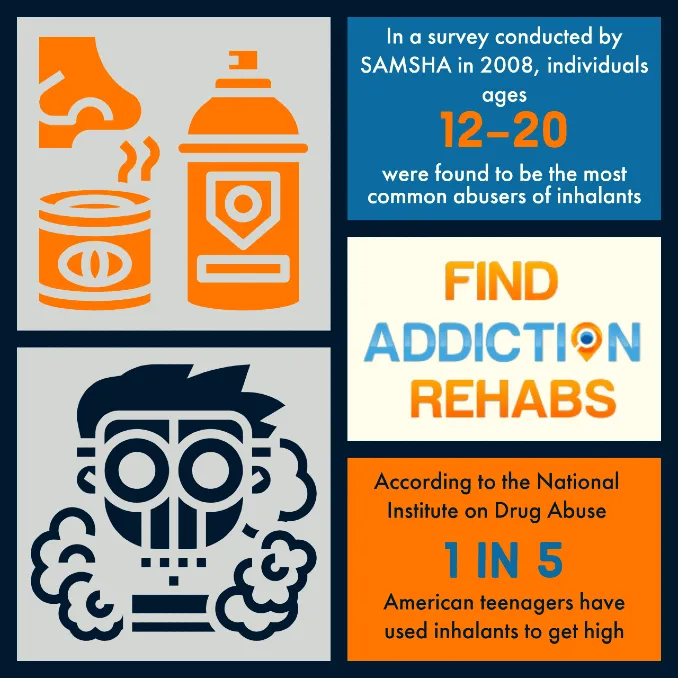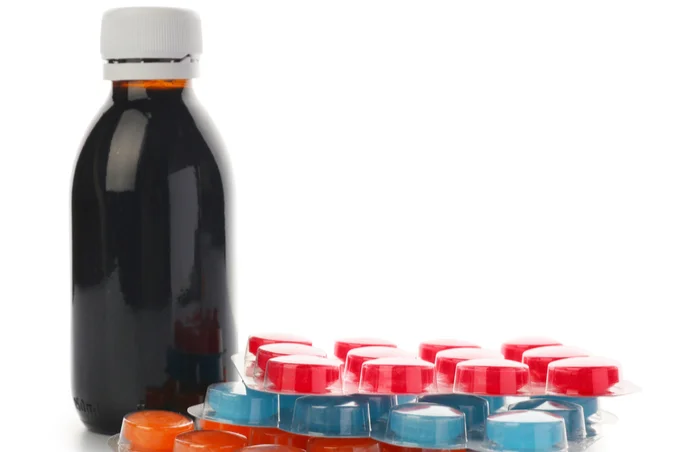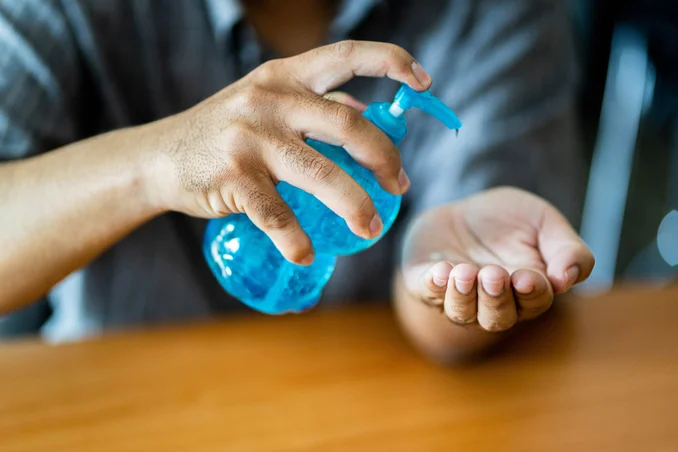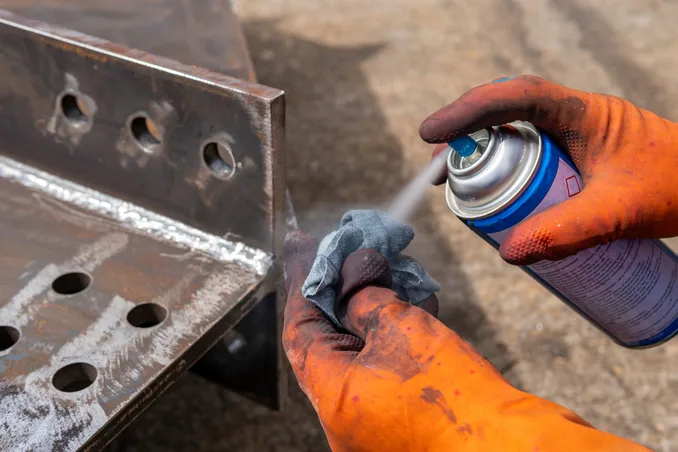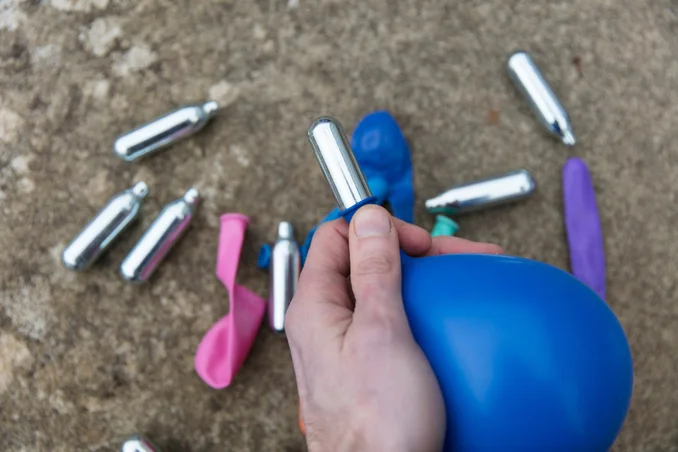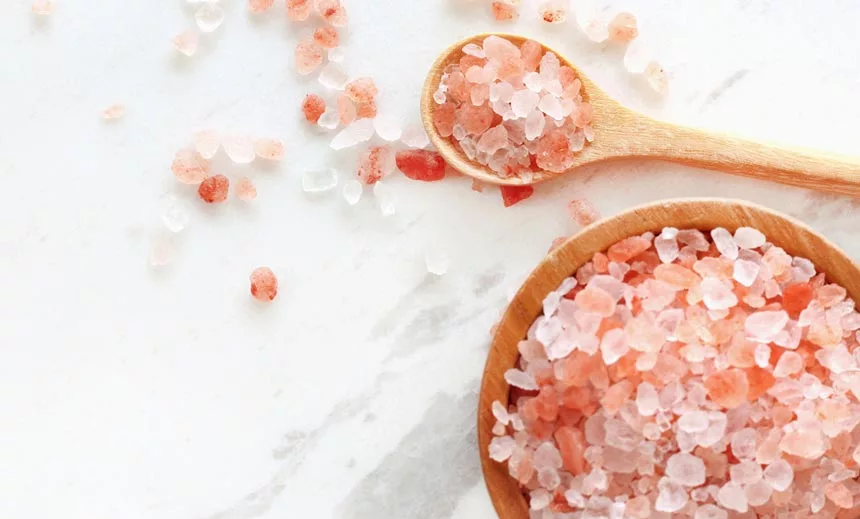Pandemic Causing Pandemonium
Table of Contents
- Pandemic Causing Pandemonium
- Household Alternatives to Illegal Substances
- Most Common Substitutes for Getting High
- Getting Nutty With Nutmeg
- Robitussin or Cough Medicines
- Allergy Medication
- Household Items Used to Get Drunk: Hand Sanitizer
- Mouthwash
- Inhalants
- Illegal Products Disguised as Household Products: Bath Salts
- Proven Addiction Treatment Methods
- Finding the Right Treatment Options for You
- 6 Shocking Household Items Used To Get High (FAQ)
- What are the significant risks associated with using household items and substances to get high?
- What is the most unexpectedly dangerous household item or substance used to get high?
- How to tell if someone is using household items to get high?
- What’s the best way to approach someone you suspect may be using household items to get high?
- Medically Reviewed By
Addiction is a serious problem that affects millions of Americans of all ages each year. In fact, studies show that nearly 21 million Americans have battled with at least one addiction in their lifetimes. Unfortunately, of those 21 million, only 10% ever receive the help they truly need. Although far from the majority, many substance users began with household items used to get high.
From alcohol to opioids, substance abuse runs rampant across the globe and has been responsible for millions of deaths over the years. Currently, drug addiction in America has only grown worse; and, in the midst of the COVID-19 pandemic, these numbers continue to sky-rocket.
Now that families and individuals are stuck at home more often than ever, it is becoming increasingly important to acknowledge household items that are potentially problematic, whether to individuals who are in recovery, those struggling with addiction, or those who are simply too curious for their own good.
Household Alternatives to Illegal Substances
When typical drugs become more difficult to acquire, individuals tend to get creative with the products they have on hand. Common household items like cleaning supplies, dental care products, and over-the-counter medications (amongst other things) are being increasingly used by experimental teens and desperate adults to lose touch with reality.
Unfortunately, there are countless ways to get high without using drugs. While these household products are not the equivalent to illegal substances, their effects are quite similar and can just as easily result in severe consequences.
Most Common Substitutes for Getting High
For individuals who lack access to the usual illegal drugs they may use to obtain a specific high, resorting to using everyday household items is a relatively common occurrence. There are several ways in which individuals can achieve similar results to the effects of drug abuse, ranging from the use of common baking ingredients, medication, or even cleaning supplies.
Getting Nutty With Nutmeg
Typically known for its warm, earthy flavor and culinary versatility, nutmeg is the complimentary sibling to cinnamon and a fan-favorite to many bakers. In addition to its popular usage in several baked goods, nutmeg also has anti-inflammatory properties that can improve blood sugar levels, digestion, and heart health.
While there are many culinary and science-backed benefits of nutmeg, this savory spice also has a dark and dangerous side. When it comes to consuming too much nutmeg, this pantry item can have a mind-altering effect on individuals.
Also referred to as nutmeg intoxication, this high comes from an ingredient in nutmeg called myristicin, a chemical compound that is found in the essential oils of its plant. When broken down in the human body, myristicin disturbs the central nervous symptom and can cause nausea, dizziness, hallucinations, and more.
In small doses like baking, nutmeg is harmless, and as we shared earlier, actually has a few health benefits. However, large doses of five teaspoons or more will have adverse effects.
Of course, it is highly unlikely individuals will ever need five teaspoons of this spice, as a little goes a long way in both baking and cooking. Since it is predominantly used sparingly, its intoxicative side effects are not widely known.
Regardless of its lack of popularity, it is important to be aware of the symptoms and effects of nutmeg intoxication. Additional side effects may include dry mouth, confusion, seizures, vomiting, rapid heart rate, nausea, low blood pressure, and diarrhea.
Myristicin is not known to be an addiction-forming drug, but it is a cause for concern. Particularly, when mixed with other drugs, nutmeg intoxication can be fatal.
Robitussin or Cough Medicines
Robitussin is a cough-suppressing medication that is available in over 100 different over-the-counter products. While its intended use is to subdue allergy or illness-related coughing, Robitussin and other cough syrups are widely misused by teens and adults.
Since the active ingredient in cough medicine (dextromethorphan) is not a controlled substance, it can be purchased at any store by anyone — enabling its problematic potential for abuse.
In fact, many users refer to Robitussin abuse as robotripping. Robotripping occurs when an individual ingests large quantities of cough medicine — like Robitussin — to experience hallucinogenic effects. Robotripping is commonly used by younger generations who want to experience the hallucinogenic effects of the medicine without the need for harder drugs like LSD or psychedelic mushrooms.
This recreational and dangerous use of cough syrup can cause life-threatening effects that need to be taken seriously. The hallucinating properties in cough medicine are powerful and cause a variety of severe symptoms.
In large quantities, it can cause users to experience paranoia, aggression, delusions, violent behavior, night terrors, and impaired cognitive function. Other common side effects include nausea, sweating, high blood pressure, and sedation. In the most extreme cases, consuming too much dextromethorphan can result in chemical psychosis. In teens, an addiction to cough syrup can impair their learning abilities and memory.
The Dangers of Lean
When it comes to common household items, teens often become particularly creative in the uses they are able to find for them. Furthermore, partying can particularly enhance these creative methods which teens use to get high.
Becoming increasingly popularized within the media and music industry, a concoction known as Lean is one of the many ways in which cough syrup is being utilized as a means of producing mind-altering effects. In particular, prescription cough syrups containing codeine are mixed with a soft drink and, in some cases, alcohol, and consumed in high doses in order to induce drowsiness and relaxation.
However, especially if combined with hard liquor, drinking too much of this substance can have severe consequences, and may even prove fatal.
Allergy Medication
In September of 2020, the Food and Drug Administration (FDA) issued a warning about the dangers of taking higher than recommended doses of common allergy medicine like diphenhydramine (Benadryl). Perhaps unsurprisingly, allergy medicines serve as one of the most common household items to get high off due to their ease of accessibility.
The excessive use of allergy medicine and antihistamines can produce a sedating and hallucinogenic effect on its users. For an even stronger high, some individuals will actually combine their allergy medication with prescription drugs, such as Xanax.
As a recreational drug, antihistamines can cause a variety of symptoms, including:
- Confusion
- Rapid heart rate or heart palpitations
- Nausea
- Double vision
- Dry mouth
- Loss of appetite
Furthermore, long-term abuse or large quantities of allergy medication (more than 25 mg) can lead to grave effects such as heart problems, seizures, coma, or even death.
There has also been an increase in dangerous trends on social media platforms, such as the “Benadryl Challenge” on TikTok, which encourages individuals to take large doses of this particular antihistamine as a means of inducing intense hallucinations.
Regrettably, what most participants fail to realize is that exorbitant use of allergy medication can (and has) resulted in death. In light of trends such as this one, it is more important than ever to raise awareness of the extreme damage social trends can cause.
It may also be beneficial to keep any allergy medications (or medications that can be used for questionable means) somewhere that can be easily monitored. Preferably, one that is out of reach from young children, curious teens, or adults that are at a higher risk of substance abuse
Household Items Used to Get Drunk: Hand Sanitizer
Perhaps unsurprisingly, items found within one’s own home may not just be used with the intention of getting high. In several cases, individuals may use them as alternatives to alcohol in becoming intoxicated.
Particularly for those struggling with alcohol abuse who have been cut off from or lack a means of acquiring booze, it is not uncommon for these individuals to resort to more creative means of fueling their alcohol addiction.
The Risks of Getting Drunk from Hand Sanitizer
Due to the high levels of alcohol used to produce it, hand sanitizer is an easy way for individuals (especially teens) to get drunk. In fact, the amount of alcohol in certain bottles of hand sanitizer (60% and up) is equivalent to five shots of liquor. Of course, consumed in excess, the results of this activity can be deadly.
Since the pandemic began, hand sanitizer has become a necessity in the home and workplace. Because of this sudden increase in its accessibility, more and more people have been using sanitizing liquid in more reckless ways.
In particular, the high alcohol content in hand sanitizer is enticing teens to drink it in order to become intoxicated. Regardless of age, those who misuse hand sanitizer as a beverage may experience slurred speech, trouble with coordination, and vomiting.
While these symptoms are nearly identical to standard alcohol consumption, the isopropyl alcohol that is found in this product can cause a range of serious health risks for those that choose to drink hand sanitizer, including:
- Alcohol poisoning
- Damage to the nervous system; brain damage
- Damage to skin and hair due to the high alcohol content
- Blurred vision; blindness
- Organ damage and/or failure
Furthermore, as a result of the pandemic, it is becoming increasingly difficult to monitor hand sanitizer stores. For those who are particularly adamant about avoiding the virus, chances are, they are using sanitizer multiple times throughout the day.
This constant use can be easily overlooked by family members, thus making it easier for teens and those struggling with addiction to engage in this indirect form of alcohol abuse to avoid getting caught.
Mouthwash
While most people may not assume this dental product holds a significant amount of alcohol, some varieties of mouthwash can contain up to 20% of alcohol. This is equivalent to that of 40-proof liquor.
Due to its high alcohol content, mouthwash is designed to spit out immediately after use. However, this is not the only reason mouthwash brands do not recommend ingestion. This product also contains hydrogen peroxide and methyl alcohol levels that are toxic to humans. Unfortunately, not many people realize this; one of the reasons why it is so commonly misused.
Mouthwash is notoriously abused by adults and teens who are struggling with addiction. In particular, those recovering from alcohol abuse may resort to ingesting mouthwash as a means of subduing withdrawal symptoms.
However, this is a risky path that can cause a relapse. Not to mention, it is highly discreet, as the minty after-effects cover up breath smells; and no one really questions someone whose breath smells like mint rather than liquor.
Negative Side Effects of Misusing Mouthwash
If ingested in large quantities, especially if done so over long periods of time, the effects of these toxic chemicals can be severe. Common symptoms of consuming mouthwash may include:
- Alcohol poisoning
- Blindness
- Organ failure
- Gastrointestinal damage
- Vomiting, nausea, diarrhea
- Death (in extreme cases)
Inhalants
Inhalants define a broad category of products that are commonly misused for their mind-altering effects. These have a high potential for, and can even be a gateway to drug abuse. They are one of the primary methods teens use to get high, due to how easily accessible and affordable these products are.
Disguised as your everyday household products, these inhalants may include:
Household Items Used to Get High: Solvents
Products that contain solvents, which are used to dissolve solutes in a formulation, are often used to get high. These may include several common items, such as:
- Paint thinners or removers
- Lighter fluid
- Glue
- Dry-cleaning fluid
- Permanent marker fluid
- Insecticide
- Degreaser
- Nail polish remover
- Various cleaning supplies
These can be used in several, and sometimes strange ways, including being “huffed,” “sniffed,” or “bagged.” When huffing these products, individuals may hold a rag soaked in a solvent to their nose and deeply breathe it in.
Sniffing these products involves breathing in fumes straight from a container; for example, the common trend is where teens inhale glue fumes directly out of a glue bottle. Bagging a solvent may involve filling a paper bag or balloon with this substance, and then inhaling it from these holders.
Household Items Used to Get High: Aerosols
When it comes to aerosols (forms of compressed gas), several of these products are commonly used to get high. These may include:
- Spray paint
- Cleaners for computer keyboards
- Vegetable oil spray
- Whipped cream cans (also referred to as whip-its or whippets)
- Hair sprays
- Spray deodorant
- Canned air fresheners
- Fabric protector spray
Aerosol sprays, while effective ways to clean dust or simplify other household and personal duties, can quickly become dangerous when misused frequently and/or over long periods of time.
In particular, a rise in the trend of huffing nitrous oxide from whipped cream cans, referred to as doing whippits, has produced an increase in the development of several neurological (and other) consequences. To learn more about the dangers of whipped cream, click here.
Household Items Used to Get High: Gasses
While not as easily accessible as most inhalants, gasses are nevertheless a reason for concern. In many cases, they most commonly are found in several medical anesthetics, but can also appear in commercial products. These may include:
- Nitrous oxide (“laughing gas”)
- Chloroform
- Halothane
- Butane lighters
- Propane tanks
The Particular Dangers of Inhalants
When thinking about these products, you might not immediately associate them with deadly drugs. However, many individuals, unfortunately, abuse them for their psychoactive properties that occur from the release of nitrous oxide.
Inhalants are common party drugs that are primarily used among teens and young adults. When breathed in, they can produce a temporary high, and induce euphoria. Furthermore, to prolong these effects, users may continuously inhale over a long period of time.
When individuals inhale compressed gas, regardless of the type or method, this exposure to the toxic chemicals found within inhalants can affect the central nervous system. After all, they essentially cut off the brain’s oxygen supply.
In some cases, the effects of this activity are almost identical to alcohol consumption — causing slurred speech, dizziness, lack of coordination, etc. With excessive abuse or exposure to high doses of these inhalants, users may also experience a number of other symptoms, including:
- Hallucinations or delusions
- Nausea
- Headaches
- Drowsiness
- Numbness
- Muscle spasms
- Gastrointestinal pain
- Violent mood swings
- Hearing loss
- Decreased motor skills
- Brain damage
It is important to note that, although the original purpose of inhalant products is not drug-related, individuals can still suffer an overdose from them. Many of the above-mentioned inhalants contain high concentrations of chemicals with active ingredients that — if respired too often — can cause seizures or even coma. Furthermore, their methods of usage (particularly huffing inhalants), can cause death by suffocation, choking, and asphyxiation.
Sudden Sniffing Death Syndrome
As one of its most severe effects, whippits and other inhalants can cause a fatal syndrome called Sudden Sniffing Death Syndrome (SSDS). This is characterized by an abrupt stopping of the heart, resulting in death. SSDS is so severe that it can happen to a healthy person on their first time using an inhalant.
Thus, even if these are considered legal alternatives to other forms of drug and alcohol abuse, it is always recommended that individuals never attempt to misuse household (or any other) products and substances.
Illegal Products Disguised as Household Products: Bath Salts
In some cases, illicit substances may be packaged and labeled in ways that make them appear to be seemingly harmless or unassuming items. One example of this is bath salts (not to be confused with Epsom salts, which are used for bathing), a drug that is almost ten times stronger than cocaine.
This substance has passed under the detection of law enforcement and health agencies in several strange ways, often sold in small packets disguised as plant food, or a cleaner for jewelry and phone screens. However, these could not be further descriptors of bath salts, which can have particularly adverse effects in the case of their continued abuse. These may include:
- Paranoia
- Hallucinations
- Panic attacks
- Excited delirium; extreme agitation and violent behavior
- Kidney or heart failure
In some cases, the symptoms of consistent usage of bath salts can lead to the development of mental health disorders or other behavioral health conditions.
Proven Addiction Treatment Methods
Whether dealing with a substance use disorder, or a problematic habit of engaging in more creative methods to get high, there are several treatment options available to individuals who are ready to start their recovery journey.
When it comes to deciding which treatment methods will work best for them, individuals can greatly benefit from speaking to a qualified healthcare provider. Particularly for those struggling with co-occurring mental health issues, licensed medical professionals with experience handling addiction can help them to find options that can treat both their substance use and mental health disorder.
Finding the Right Treatment Options for You
Now that we are living in the unprecedented times of a global pandemic, it is more important than ever to keep a watchful eye on teens and loved ones. The terrible effects of this pandemic have, unfortunately, caused many individuals — with or without a history of substance abuse — to do dangerous things out of boredom, depression, and anxiety.
If you or someone you love is struggling with addiction, this can be an incredibly difficult experience. But that’s why here at Find Addiction Rehabs, our team is dedicated to connecting you with the addiction resources you need.
Just by calling us at our 24/7 hotline, one of our representatives can help you find a treatment center that is dedicated to serving your recovery care needs. Make the right choice, and let us help you or your loved one get started on a path to sobriety, and a healthier, happier future, today!
6 Shocking Household Items Used To Get High (FAQ)
What are the significant risks associated with using household items and substances to get high?
The most common risk is that you’re unsure what’s in the substance or product you’re using. You might think it’s one thing, but it could be vastly more toxic. Another risk is that the drug may interact with any other drugs or medications you take for another reason.
What is the most unexpectedly dangerous household item or substance used to get high?
Perhaps the most dangerous household item used for getting high is a chemical found in many household cleaners. Sodium hypochlorite is used in many different cleaning products. The main problem with this chemical is that it can quickly get into your system by inhaling vapor or even touching it on your skin.
How to tell if someone is using household items to get high?
The most apparent sign of inhalant abuse is a strange odor in the air. Inhalants can have a scent similar to paint thinner, glue, or aerosols. Inhalant abuse can be dangerous because it can cause serious health problems and even death. The tragic passing of singer Aaron Carter shows the risks of abusing inhalants and getting high off household goods.
What’s the best way to approach someone you suspect may be using household items to get high?
There are many ways to approach someone you suspect may be using household items to get high. You have to be sensitive and compassionate but also direct and firm.
It’s not an easy conversation, but the most important thing is to approach it in a way that shows you care about their well-being and want them to be healthy and happy. It will also help to have a plan for treatment in place, with an attractive destination to show your loved one. Find Addiction Rehabs can help with everything from planning to intervention services.
Nicole Rogers is an experienced and accomplished writer with special interests in the fields of Anthropology, English, and behavioral health, and has written countless articles for newspaper publications, institutional research journals, and Find Addiction Rehabs.
Her alma mater is Florida Atlantic University in Boca Raton. Nicole hopes to spread awareness of and combat the stigmatization surrounding addiction and substance abuse treatment through her writing and work in the field.
